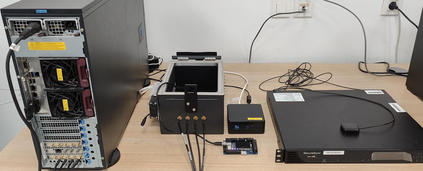
The digital transformation driven by Industry 4.0 relies on networks that support diverse traffic types with strict deterministic end-to-end latency and mobility requirements. To meet these requirements, future industrial automation networks will use time-sensitive networking, integrating 5G as wireless access points to connect production lines with time-sensitive networking bridges and the enterprise edge cloud. However, achieving deterministic end-to-end latency remains a challenge, particularly due to the variable packet transmission delay introduced by the 5G system. While time-sensitive networking bridges typically operate with latencies in the range of hundreds of microseconds, 5G systems may experience delays ranging from a few to several hundred milliseconds. This paper investigates the potential of configuring the 5G time division duplex pattern to minimize packet transmission delay in industrial environments. Through empirical measurements using a commercial 5G system, we evaluate different TDD configurations under varying traffic loads, packet sizes and full buffer status report activation. Based on our findings, we provide practical configuration recommendations for satisfying requirements in industrial automation, helping private network providers increase the adoption of 5G.
翻译:暂无翻译










